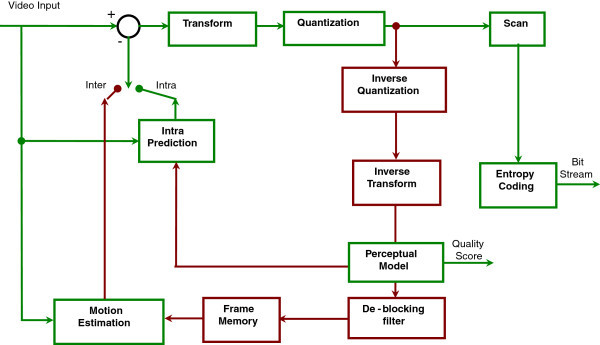Good afternoon gents
I'm going to try and stop the confusion (my own too - im researching as i go here so feel free to correct me) once and for all regarding HD content:
MPEG2 is the youngest of the 3 formats, it has no theoretical bitrate limitations, is completely editable on the timeline (in HDV format), and is the format used to film in, and to edit low grade HD content in the media.
MPEG2 is also used to encode DVD videos, but this is a different application of the codec.
You can find examples of HDV MPEG2 work on every music video, they are all done with HDV cams. Also Robert Rodriguez filmed and worked with MPEG2 to make Once upon a Time in Mexico, the third film in the El Mariachi series. He also edited the entire movie and did all the effects himself at his ranch, in his home studio.
(if you look carefully at Johnny Depps eyes you'll notice a few mistakes Robert made during his first foray into proper digital effects - but they're barely noticeable).
MPEG 4-AVC is a specification designed for highly compressing and playing back HD content from the new blu-ray and HD-dvd formats, as well as streaming content through various mediums. The format is equally flexible as MPEG2, however, its benefits over MPEG2 exist mainly in HD content playback, where it provides higher quality and resolution at the same bitrates. The exception to this is its Lossless mode -where it has the capability of superceding MPEG2 in editable
Xvid is MPEG4, in a very simple form, a low bitrate high compression format with a few benefits over MPEG2 pertaining to compression ratios, but exhibits colour saturation, and noise which is not present in higher bitrate MPEG2 for example. My experiments in raising bitrates have not seen a reduction in these detrimentary artefacts.
What are Xvid, H264 and x264?
________________________________________
Xvid is the open source version of MPEG4, the lowest quality part of the MPEG standard - its designed around a movie file being lower or equal resolution than a dvd, and lower size, but similiar quality. It can be used to provide HD content however, although it is not really designed to do this.
One can quite clearly tell when Xvid has been used to display HD content instead of MPEG4-AVC, from the colouration, and speckling artefacts.
X264 is the open source implementation of the High bitrate HD res version for the standard (MPEG4-AVC). It exhibits good colour management, great compresion ratios, and generally provides extremely high quality results in an HD playing field.
H264 is simply the part of the MPEG4 AVC standard that relates to the video encoding of HD content. Its the specification for encoding - which x264 is trying to implement.
WMV-HD uses VC-1, which is microsofts own proprietary HD codec, built into the Windows Media Video spec, and is actually really good quality too. Double disc sets with a WMV-HD Normal DVD disc accompanying the MPEG2 DVD are on sale in America, but people are reportedly having enormous trouble playing them. DRM issues have been reportedly been a pain and detrimental to the cinematic experience. They have however been largely successful in maintaining region coding control. For now.
Why only x264? What about all the other H264 codecs?
______________________________
X264, like XviD is open source. Going from my past experience, while open source is a little flaky at first (like all software), it is almost certain to culminate in a higher quality codec at the end of the day, than anyone elses.
Examples: Lame MP3, Xvid MPEG 4
Why? There are no budgets - noone is going to say "its good enough - if we spend any more money on it - we wont make a profit". Its done for the love, and anyone can get involved. The only thing that might happen is someone will say "its good enough - any more work will not bear any fruit". Which means its good enough already, and cant really be improved on much. Top Banana!
I have ignored the multitude of alternative H264 codecs since open source is the high and mighty ruler and will eventually 0wn all
Also there are 20 or 30 of them so any test would be painful and tearful. Feel free to add any results of tests you have performed.
I have been experimenting with converting an interlaced source to various progressive HD-DVD (M$ H264 equivalent) resolutions and found adaptive deinterlace - while slow - to be the highest quality result from an interlaced source.
Remembering that H264 does not lend itself directly to interlaced video, I would suggest that with quality tests - motion adaptive deinterlacing should be used. The principles of motion adaptive deinterlacing can be seen here - explained clearly.
I'm going to try and stop the confusion (my own too - im researching as i go here so feel free to correct me) once and for all regarding HD content:
MPEG2 is the youngest of the 3 formats, it has no theoretical bitrate limitations, is completely editable on the timeline (in HDV format), and is the format used to film in, and to edit low grade HD content in the media.
MPEG2 is also used to encode DVD videos, but this is a different application of the codec.
You can find examples of HDV MPEG2 work on every music video, they are all done with HDV cams. Also Robert Rodriguez filmed and worked with MPEG2 to make Once upon a Time in Mexico, the third film in the El Mariachi series. He also edited the entire movie and did all the effects himself at his ranch, in his home studio.
(if you look carefully at Johnny Depps eyes you'll notice a few mistakes Robert made during his first foray into proper digital effects - but they're barely noticeable).
MPEG 4-AVC is a specification designed for highly compressing and playing back HD content from the new blu-ray and HD-dvd formats, as well as streaming content through various mediums. The format is equally flexible as MPEG2, however, its benefits over MPEG2 exist mainly in HD content playback, where it provides higher quality and resolution at the same bitrates. The exception to this is its Lossless mode -where it has the capability of superceding MPEG2 in editable
Xvid is MPEG4, in a very simple form, a low bitrate high compression format with a few benefits over MPEG2 pertaining to compression ratios, but exhibits colour saturation, and noise which is not present in higher bitrate MPEG2 for example. My experiments in raising bitrates have not seen a reduction in these detrimentary artefacts.
What are Xvid, H264 and x264?
________________________________________
Xvid is the open source version of MPEG4, the lowest quality part of the MPEG standard - its designed around a movie file being lower or equal resolution than a dvd, and lower size, but similiar quality. It can be used to provide HD content however, although it is not really designed to do this.
One can quite clearly tell when Xvid has been used to display HD content instead of MPEG4-AVC, from the colouration, and speckling artefacts.
X264 is the open source implementation of the High bitrate HD res version for the standard (MPEG4-AVC). It exhibits good colour management, great compresion ratios, and generally provides extremely high quality results in an HD playing field.
H264 is simply the part of the MPEG4 AVC standard that relates to the video encoding of HD content. Its the specification for encoding - which x264 is trying to implement.
WMV-HD uses VC-1, which is microsofts own proprietary HD codec, built into the Windows Media Video spec, and is actually really good quality too. Double disc sets with a WMV-HD Normal DVD disc accompanying the MPEG2 DVD are on sale in America, but people are reportedly having enormous trouble playing them. DRM issues have been reportedly been a pain and detrimental to the cinematic experience. They have however been largely successful in maintaining region coding control. For now.
Why only x264? What about all the other H264 codecs?
______________________________
X264, like XviD is open source. Going from my past experience, while open source is a little flaky at first (like all software), it is almost certain to culminate in a higher quality codec at the end of the day, than anyone elses.
Examples: Lame MP3, Xvid MPEG 4
Why? There are no budgets - noone is going to say "its good enough - if we spend any more money on it - we wont make a profit". Its done for the love, and anyone can get involved. The only thing that might happen is someone will say "its good enough - any more work will not bear any fruit". Which means its good enough already, and cant really be improved on much. Top Banana!
I have ignored the multitude of alternative H264 codecs since open source is the high and mighty ruler and will eventually 0wn all

Also there are 20 or 30 of them so any test would be painful and tearful. Feel free to add any results of tests you have performed.
I have been experimenting with converting an interlaced source to various progressive HD-DVD (M$ H264 equivalent) resolutions and found adaptive deinterlace - while slow - to be the highest quality result from an interlaced source.
Remembering that H264 does not lend itself directly to interlaced video, I would suggest that with quality tests - motion adaptive deinterlacing should be used. The principles of motion adaptive deinterlacing can be seen here - explained clearly.















Comment